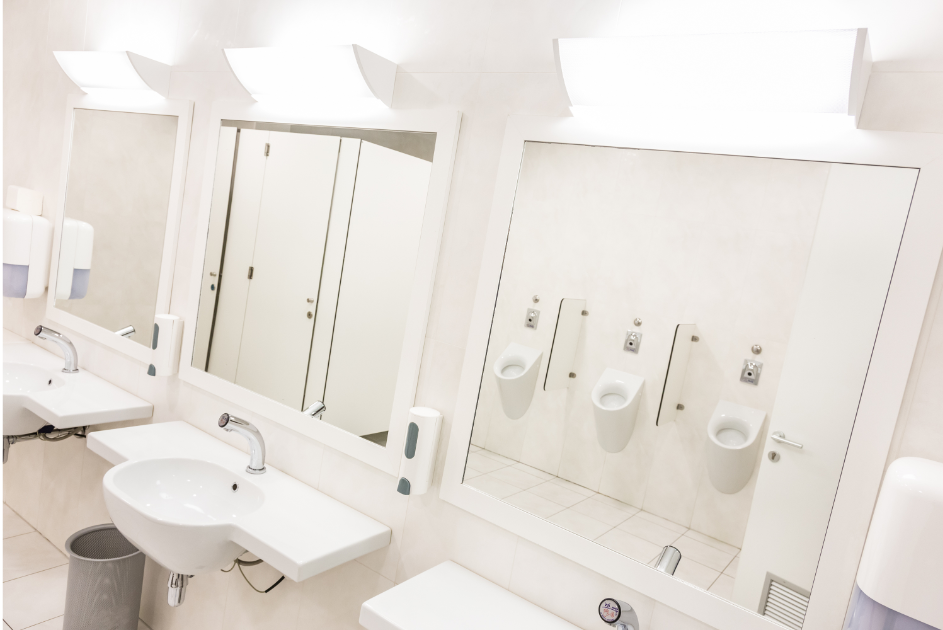Americans share 15 of the coolest things they've seen overseas that they want here. Like, now.
"Taxes filed FOR YOU, and the return just appearing in your bank account."
A train conductor, a bidet, and fries with gravy.
America is one of the wealthiest countries in the world, but it lacks a few things compared to other countries. Why can’t America have a high-speed rail, a healthcare system that won’t bankrupt you, or super cool toilets like they do in other parts of the world? Why are we still tipping on every meal, and why can't you find a decent meat pie anywhere?
The great American experiment has done pretty well for the past 249 years, but we still have some blind spots. It would be cool if a brave politician could one day make America truly great by poaching all the best ideas from around the world and creating the perfect country.

A Redditor recently asked people on the AskReddit subforum, “What's one interesting thing you saw in another country that made you think, 'How does my country not have this?" The responses are a great starting point for this hypothetical leader to begin making the improvements we’ve all been dying for. Bidets? Yes, we can! French fries with gravy? Yes, we can! Beer at Burger King? Yes, we can!
We compiled a list of the 15 most interesting things they have in countries that should be implemented in America, like, yesterday.
15 cool things they have in other countries that we need in America
1. Cashiers can sit down
"I was an exchange student in Germany during my Junior year in high school. Right before I left, I had a job as a cashier at a grocery store. When I first went shopping in Germany, I thought, 'THEY GET TO SIT?! WHY COULDN'T I DO THAT?!' The only place that does this in the U.S. now is Aldi, which of course is a German company."
"Corporations: 'It's a slippery slope. If we let cashiers sit, what's next? The federal government will make a law that says that pregnant women get time off, and we have to give them money? Fathers get paid time off, too? We let people stay home if they're sick, without a doctor's note? Employees get more than 2 weeks of vacation per year? We have to pay people enough to afford both food AND housing? Where does it end?!'"

2. On-time public transport
"I travelled everywhere in Japan by public transport. My Japanese was terrible, but I could get everywhere with Google Maps because of the utter reliability of the services. I turned up at the station or bus stop and caught the transport that presented itself. The train, which was 5 minutes early, was not my train. The one that was on time on the right platform was the one I needed to catch."
3. Fit-levers on faucets
"I saw something similar in Mexico City, only it was a foot pedal to activate/flush a public toilet. This operation seems so much more sanitary than using a handle to flush a toilet."
"You want two peddles: 1) to lower the seat (it should automatically lift back up unless it has a lid which auto-closes); 2) flush."
4. Coupon crushers
"In 1997, I was in Singapore and saw these things that looked like vending machines. It was a machine that you would take your empty pop can, and put it in this compartment, lift a handle to crush the can. It would then drop down into the machine. Then the machine printed out coupons for businesses in the area. I thought it was genius! I've never seen it anywhere else."
5. Bidets
"More Bidets, pls. My anus can only take so much tp."
"Honestly, every person who has tried it has understood why I love them so much. It’s uncomfortable at first because it’s different, but it really does leave you feeling much cleaner."

6. Private public restroom stalls
"Public restroom stalls without the stupid gaps in between the doors, and smaller to zero gaps on the bottoms of the doors."
7. Server buttons
"In South Korea, there were buttons on the tables to signal you were ready to order, pay, whatever. It meant no pushy or hovering waitstaff and they were able to chill and relax a bit when no one needed their help."
"In Korea, they have a 'bing-bong' button on your table on a restaurant. If you need something, you press the button, your table number shows up on a screen by the server station, and they come over to your table. Usually, I just hold up my empty bottle or side dish and make eye contact from across the room, and they smile and bring me another one. Otherwise, the servers don't come by and bother you during the meal. It's so so so much better this way."
"We have this at Korean BBQ restaurants in Los Angeles."
8. French fries with gravy
"In Canada, you can get French fries with cheese and gravy."
"We have this in the US. If you're in the Jersey/New York area they're called Disco Fries."
9. Free healthcare
"Basically, your medical bills are paid for by your taxes, so when you go into the hospital, the only thing that ends up costing money is the parking. The drawback can be that there is a waitlist for some surgery (except when it's urgently needed to keep you alive), at this time, medical insurance can pay for it, but it's still not as expensive as in America. Also, depending on the country, your medication is also a fraction of the actual cost. For example, in America a box of medication I have to take would cost me about US$600 a month, here in Australia that same medication only costs me about US $15"
"Socialized medicine is only as good as the people implementing it. If it isn't working properly, that isn't really the concepts fault. It's the people running it."

10. Traffic light countdowns
"In Germany, the traffic lights go from green to yellow to red like they do everywhere else, but after red, they light up red + yellow together before green. That way people have a head start getting ready to hit the gas and by the time it’s green you’re immediately moving forward. Bothers me more than it should when it just goes from red to green in other countries."
11. The government does the taxes
"Taxes filed FOR YOU, and the return just appearing in your bank account."
12. Beer vending machines
"Beer at Burger King" (One-upper!)
13. Attached caps
"This one's less exciting than a lot of others, but I bought a bottle of Coke in London, and when I opened it, I realized there was a little piece of plastic that held the lid to the neck of the bottle, so you don't have to hold it. I can't believe we don't do that in the US. It's such a tiny little thing, but it feels like a no brainer when you think about it."
"That is due to a new law (an EU law, but a lot of brands have done it for their UK products too). Bottle caps have to be attached to the bottle to prevent them from being littered and to help ensure that they are also recycled along with the bottle."
14. Meat pies
"America, they are just not as big a thing here as they are in other countries. I loved them in New Zealand, in fact, when I was there, they had a fast food joint called Georgie Pie that was absolutely fantastic, also bakeries everywhere, where you could get them too."
15. Clean public toilets
"Clean, modern public toilets. I've been to Japan a few times, and those public toilets are amazing. I need to go back to try the one-way glass wall ones. (On a side note, having been to some Japanese music festivals, it seems that they have no problem setting up mens bathrooms in a way that the women line up looking directly into the men's bathroom. Very odd.)

This article originally appeared in June.
